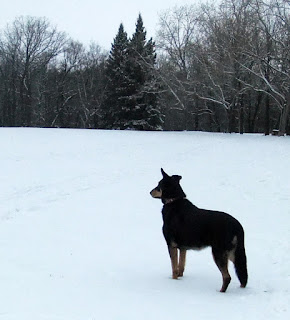Smelling the Roses
Flying down the trail, snow is shooting off your skis, the wind is in your hair, the dogs are pulling like a well oiled machine.... until they spot, or more accurately sniff, a pee tree.
One, or both dogs come to a screeching halt, you start to slow down, frustrated, as your dogs lean in towards the yellow snow and get a nice big whiff of it.
Why do dogs smell pee? Because that is what dogs do. The smell of pee to them, is much like you spending time on Facebook. They find out what's going on with their friends and who has been around lately, and how they are feeling.
Facebook and pee sniffing will both get in the way of your skijoring.
The problem with stopping and “smelling the roses”, is that you want the dogs to be moving forward. When they have stopped to smell, that behaviour becomes self rewarding. They decide to stop, they get to smell, they are rewarded.
The way around this? Be on top of your dog.
 A dog will learn a behaviour, whether you want them to or not. As soon as the dog turns his head to smell a pee tree, put a stop to it. Take your dog out for a training run, or walk. Learn to anticipate where they will be stopping to smell and sniff, and be ready to react.
A dog will learn a behaviour, whether you want them to or not. As soon as the dog turns his head to smell a pee tree, put a stop to it. Take your dog out for a training run, or walk. Learn to anticipate where they will be stopping to smell and sniff, and be ready to react.
Avoid taking breaks where the dog is likely to be rewarded for smelling the roses as well. If you and your dog need a break, stop, pull in the gangline, and make it just that. A break. Not a time to “stop and smell the roses”.
While we have said before, that skijoring should be fun for your dog, there are times when you must deliver a stern “No”. Follow up with praise as soon as your dog is doing the correct behaviour. Running should be more fun that sniffing pee!


